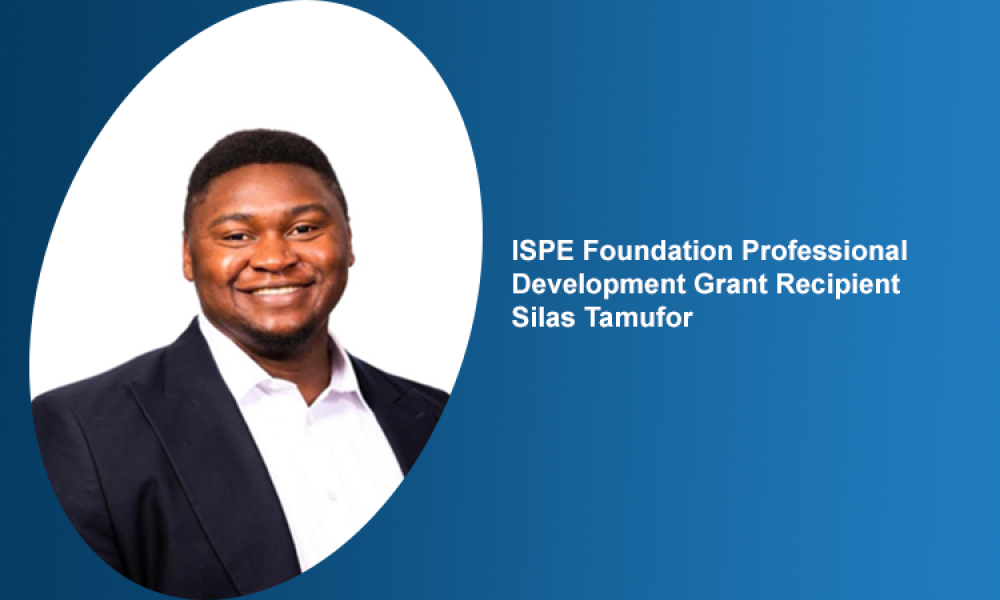ISPE Regulatory Volunteers Highlight Regulatory Challenges and Reform in Asia-Pacific

ISPE’s Regulatory Quality Harmonization Committee (RQHC) is structured with four Regional Focus Groups (RFGs): Asia-Pacific, Europe/Middle East/Africa, Latin America, and North America. The RFGs support ISPE in its understanding and response to regulatory issues and concerns for the specific region. The RQHC Asia-Pacific RFG includes pharmaceutical professionals located in or having specific responsibility for Asian markets, as well as regulatory colleagues in global roles that work with Asia-Pacific Health Authorities. This blog summarizes some of the topics recently surfaced by the group.
Korea: Drug Registration New Requirements and Challenges
The Republic of Korea has been a regulatory member of the International Council for Harmonisation of Technical Requirements for Pharmaceuticals for Human Use (ICH) since 2016, and implemented ICH M4Q(R1) in June 2016, but there are still many challenges registering – and maintaining – a regulatory dossier in this market, some of which are:
- An annual reporting requirement
- Post-approval requirements and new guidelines
- Chemistry, manufacturing, and controls (CMC) compliance summary documents required with new drug applications and post-approval variations
- GMP/site documentation
- Drug substance registration (DMF), in addition to the drug substance information provided with the drug product dossier and CMC compliance summary document
One interesting requirement observed by RQHC Asia-Pacific RFG members is that with recent post-approval variations for small molecule products, several key Module 3 sections of the dossier are required to be submitted, even if they are not impacted by, or related to, the change in question. Sections 3.2.S.2 Manufacture, 3.2.S.3 Characterization, 3.2.P.2 Pharmaceutical Development, 3.2.P.3 Manufacture, 3.2.P.4 Control of Excipients, and 3.2.P.7 Container Closure System are now required to be submitted with all variations. The members’ understanding is that this is due to a new guideline whereby the CMC compliance summary document is no longer considered the legally binding source for the information contained in these CTD sections and, instead, these six CTD sections will be considered registered information and will need to be maintained (in addition to the CMC compliance summary document, which will remain the commitment for all other information) going forward. It is expected that until the Korean Ministry of Food and Drug Safety (MFDS) converts to accepting eCTD submissions, these six CTD sections will be required with all variations for small molecule products.
This new requirement can be quite problematic when needing to file key variations, as not only do these sections need to be submitted, but these sections also need to reflect contemporary requirements, which can be difficult to achieve for older products. This requirement could be delaying the implementation of key changes for medical products, potentially delaying patient access to medicines. Companies faced with this issue could consider filing the important variation with a commitment to provide the contemporized additional sections at a later time.
As discussed in the article, “Is a Globally Harmonized Quality Overall Summary Possible?,” a CMC compliance summary document is a document required by a board of health that is above and beyond the ICH Quality Overall Summary requirement, that represents commitments, and that must be maintained throughout a product’s lifecycle. The “KCMC Summary” requires general information on the drug substance, including the drug substance specification, as well as the drug product composition, manufacturing process, container closure, and stability conclusions.
In addition to the above, registering a new product in the Republic of Korea also requires the submission of extensive site/GMP documentation, even though the Ministry of Food and Drug Safety (MFDS) is a member of the Pharmaceutical Inspection Co-operation Scheme (PIC/S). RFG members have had recent experience with a new product for which the initial approval in Korea was significantly delayed due to the need for a Korea GMP inspection. The need for a GMP inspection for all new drugs, if there hasn’t been an inspection of the proposed manufacturing site(s) in the last three years, is a new requirement as of June 2023. This is anticipated to delay the initial approval of many new drug products due to the lack of inspections during the COVID-19 pandemic.
Another challenge to marketing a product in the Republic of Korea is the requirement to maintain the drug substance dossier both independently, as an “API Drug Master File (DMF),” as well as part of the drug product marketing application dossier. The API DMF is granted a separate license number and must be maintained separately and then referenced at the time of drug product renewals. And speaking of renewals – the MFDS requires the Annual Product Quality Review report as part of the license renewal process – but no CMC dossier.
Finally, similarly to other Asian markets, RFG members have found that MFDS requires extensive ancillary documents to accompany new marketing applications. Gathering site documents such as full analytical methods, drug substance/drug product/excipient/packaging Certificates of Analysis (from both the supplier and the drug product site), chromatograms generated during method validation and stability testing, raw data to support batch analysis tables, etc., can be extremely time-consuming and can lead to a delay in registering new medicines in Korea.
While registering a new product in the Republic of Korea can be challenging, the involvement of MFDS with ICH is encouraging. The ISPE RQHC Asia-Pacific RFG will continue to focus on not just Korea, but on all of the Asia-Pacific markets, bringing together individuals who have a desire to learn, and advance regulatory science in the Asia-Pacific region.
China’s Pharmaceutical Regulatory Reform
Have you been swept along by the energy of China’s pharmaceutical regulatory reform? China’s updated regulatory framework is leading to many opportunities to bring high quality and innovative medicines more efficiently to patients in China but has also created a steep learning curve. ISPE’s RQHC Asia-Pacific RFG liaises with ISPE Shanghai members to learn from those who have ‘boots on the ground’ in China, to share current understanding of expectations and best practices.
The regulatory reforms in China that have created such a ripe environment for learning and sharing within the RFG first started in 2015, when the China State Council issued “Opinions on the Reform of Review and Approval Process for Drugs and Medical Devices.” (Guo Fa [2015] No. 44) This set a mandate for reform, and significant change soon followed. In 2017, China joined ICH as a full member, initiating a period of dynamic regulatory reform that continues to this day. In addition to aligning China’s regulatory framework with ICH, the agency issued hundreds of guidelines to provide additional clarity in expectations, shortened review periods, and added many staff to support the modernized approaches. In 2020, updates to the Drug Registration Regulation (DRR), the key regulation governing clinical trials and drug registration, introduced impactful measures such as specific review timelines for applications and variations (inclusive of CSAs, NDAs, and post-approval submissions), expansion of change reporting categories, provision of a pathway for CMC changes during clinical studies, and establishment of breakthrough designation to enable accelerated/priority review.
As a result of the reforms and updates to regulation, new drug guidelines continue to be issued in China, and the RQHC Asia-Pacific RFG enables colleagues to benchmark and learn from one another how best to implement and meet the regulatory expectations. Recent discussions have centered around:
- MPIS/Annex 2
- What level of detail should be provided
- Where there may be opportunity for alignment with international practices
- ChP harmonization
- ICH implementation
- How to approach China-specific requirements such as:
- Submission of executed batch records
- NIFDC sample testing (3 lots in final commercial pack must be provided)
- Post-approval commitments with prescriptive data requirements for both DS and DP
- Lifecycle management
- What changes can be submitted in an annual report
- Implementation status of ICH Q12
- Marketing authorization holder (MAH) responsibilities and delegation in China
Additionally, the RFG has identified opportunities for industry to share perspectives and offer examples of how guidelines can be implemented, particularly where approaches are still in development. China’s National Medical Products Administration (NMPA) has an international communications center to liaise with industry associations, and regulators are now able to travel to meetings, including international meetings, opening doors for greater discussion.
While considering opportunities to share perspective, the RFG membership agreed that ICH Q12, Technical and Regulatory Considerations for Pharmaceutical Product Lifecycle Management, and the principles it contains are both highly impactful -- and timely -- as it is of interest to regulators and industry alike, and is still in-process of global implementation, including in China. This particular ICH guideline offers tools to adopt a risk-based approach to post-approval changes, such as Post Approval Change Management Protocols (PACMPs), Established Conditions (ECs), and Product Lifecycle Management Document (PLCM), and will be a helpful companion to existing Chinese guidelines. What is more, the National Medical Products Administration (NMPA) has demonstrated interest in hearing how others are implementing ICH Q12 principles, and announced a two-year transition period of implementation of ICH Q12 that began in August of 2023.
The RQHC Asia-Pacific RFG agreed that sharing how PACMPs are implemented in other regions is a good starting place to approach ICH Q12 concepts (ECs and PLCMs are relatively new with the introduction of Q12). Although there isn’t experience with implementation of PACMPs in China, there are numerous examples and case studies to share in the two decades they have been in use in the US, and over 10 years in Europe. The RFG also has identified where discussion with NMPA would be helpful, as many questions remain regarding how PACMP would fit within current Chinese regulations. For example, will there be the option to apply reduced reporting categories in a PACMP if appropriately justified? Will NMPA still require approval of the change from the reference market before approval and implementation, or will that be waived with appropriate justification? How would registration testing be managed for a moderate change? The collection of these questions could serve as a foundation for discussion with Chinese regulators with the RFG serving as a bridge between industry viewpoint, ICH Q12 knowledge, and ISPE Shanghai.
Ultimately, the RQHC Asia-Pacific RFG serves to bring together individuals who have a desire to learn and advance regulatory science in the APAC region. This is accomplished through knowledge sharing by local experts, benchmarking regulatory practices across industry, and identification of opportunities to engage with those who are shaping the regulatory environment across Asia.
Do you support your company’s business in Asia-Pacific or have questions related to the regulatory environment in this important market? If so, you may be interested in learning more about, or becoming a member of, the ISPE Regulatory Quality Harmonization Committee (RQHC)’s Asia-Pacific Regional Focus Group. The group regularly discusses hot topics in the Asia-Pacific region, sharing current understandings of expectations and best practices. Please see “Regional ISPE Regulatory Quality Harmonization Committee Focuses on Issues in the Asia-Pacific” for more information on the Asia-Pacific RFG or contact Carol Winfield, ISPE Senior Director of Regulatory Operations.




